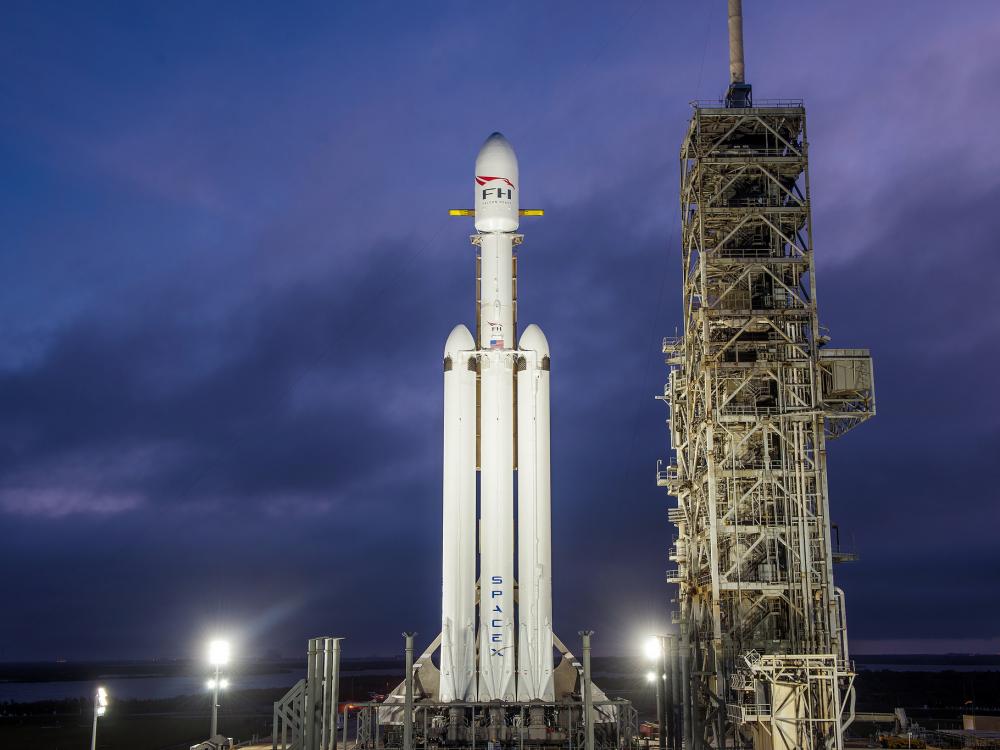
Feb 06, 2018
Today’s launch of the Falcon Heavy rocket, designed and manufactured by Space-X, is what space history curator Tom Lassman describes as “next generation” rocketry, but with roots in the 1960s “Space Age” and technology that helped bring Apollo 11 to the Moon.
According to Space-X, the Falcon Heavy—an iteration of the Falcon 9 spacecraft that launched in 2012—can lift twice the payload of any other rocket currently on the market. It’s beat only by NASA’s Saturn V, the United States’ largest and most powerful launch vehicle to date. The Saturn V sent Apollo 11 astronauts, and later Skylab, into orbit in the late 1960s and early 1970s.
“The rocket engines for the Falcon 9 are standard, liquid fuel rocket engines that have a very strong lineage to the earlier Apollo-era rocket engines,” Lassman said.
What makes the Falcon Heavy remarkable, though, is its reusable first stage—earlier launch vehicles were disposable and expensive. This could bring down costs and shake up the commercial spaceflight market—though, Lassman cautions, there’s still a ways to go to see how the market develops.
Falcon Heavy demo mission, December 28, 2017. Credit: Space-X.
The Falcon series has been in development since the early 2000s, and its “evolutionary process” has echoed how other rocket propulsion technologies and launch vehicles have been tested for decades, Lassman said. The early system failures of the Falcon 1 model were analogous to early rocket development in the United States—it was quite often an approach of learning by doing, testing new technological approaches to see what worked and what needed to be tweaked.
For Space-X, one of its biggest challenges has been how to incorporate re-entry and maneuvering systems that would allow the rocket to come back down to Earth stably and safely. According to Lassman, overcoming that challenge is what makes Space-X’s Falcon Heavy potentially so groundbreaking.

We rely on the generous support of donors, sponsors, members, and other benefactors to share the history and impact of aviation and spaceflight, educate the public, and inspire future generations. With your help, we can continue to preserve and safeguard the world’s most comprehensive collection of artifacts representing the great achievements of flight and space exploration.
We rely on the generous support of donors, sponsors, members, and other benefactors to share the history and impact of aviation and spaceflight, educate the public, and inspire future generations. With your help, we can continue to preserve and safeguard the world’s most comprehensive collection of artifacts representing the great achievements of flight and space exploration.